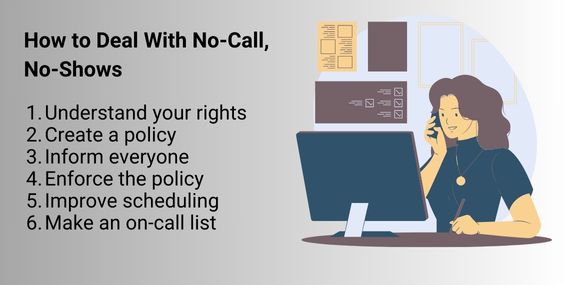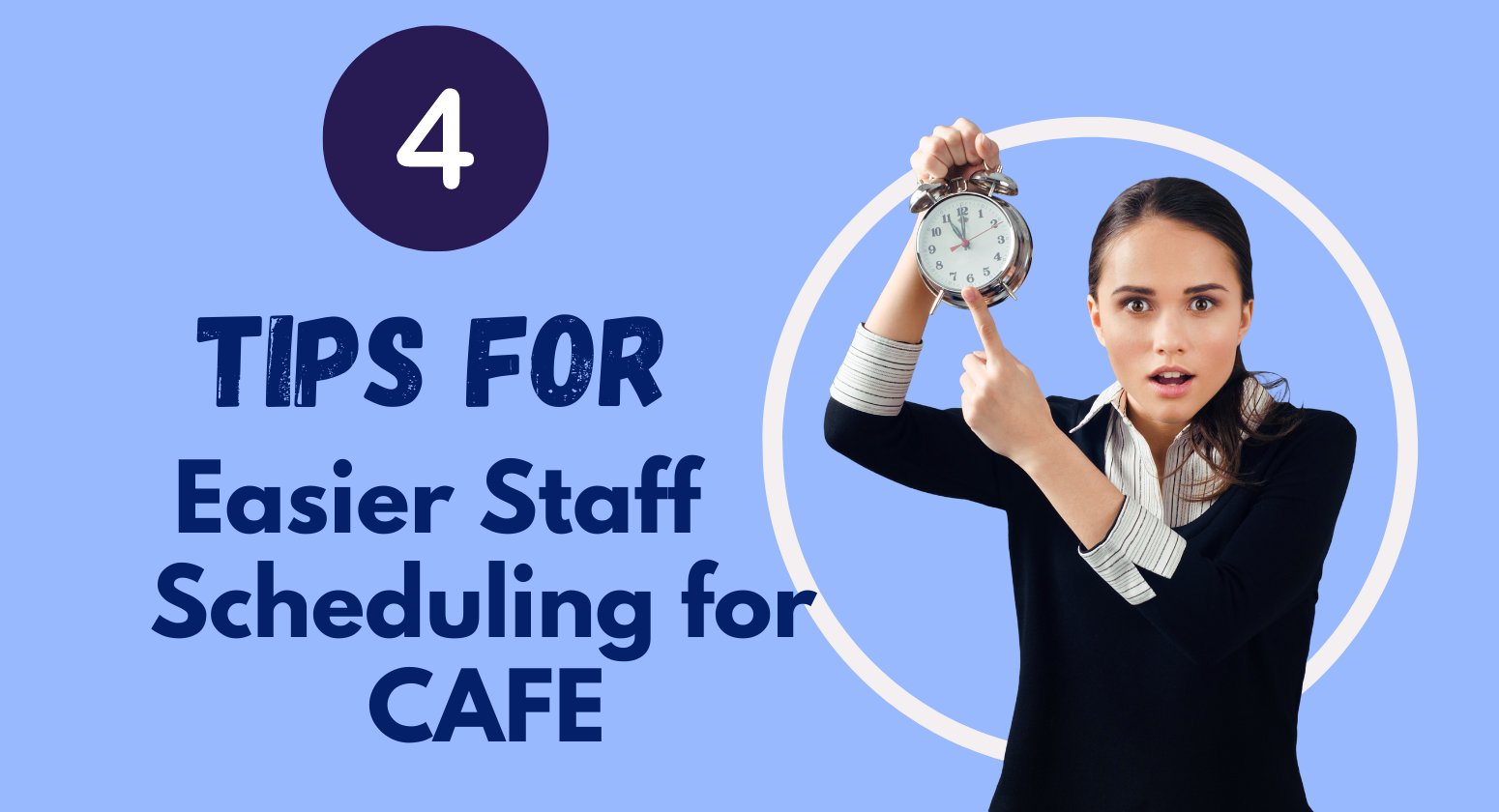
Does sudden employee absence stress you out? They may have their reasons, but it can still be costly for you and your other employees. This is especially true when they don’t call to let you know they’ll be missing work.
Sometimes, there’s no way around a no-call, no-show incident. After all, an employee might have an emergency regarding family members, or get into an accident and be unable to call. However, you can implement a policy that minimizes the risk of no-shows.
Here’s how to develop a no-call, no-show policy, and why you need one.
Disadvantages of No-Call, No-Shows
The CDC says that absenteeism costs US employers $225.8 billion every year in productivity loss 💸. It’s, therefore, crucial to limit the random days off that your employees take. In particular, it’s important to avoid no-call, no-show incidents where possible.

Source: CDC
Frequent cases can lead to a variety of issues, including:
- Decreased productivity due to missing an employee
- Low morale and extra strain on working employees
- Negative financial impact
- May decrease customer satisfaction
For the sake of your financials and the wellbeing of your other employees, it’s vital to try and prevent no-shows.
How to Deal With No-Call, No-Shows
You can limit the number of employee no-call, no-show incidents with certain measures. Namely, with a clear policy for no-call, no-shows, employees will know where they stand and what to do in case of emergency. Keep in mind that your policy must stand in line with all current employment laws.
Here’s how to create and keep a policy.

1. Understand What a No-Call, No-Show Is 🤔
Firstly, you need to understand your legal rights and those of your employees. Law Insider defines a no-show, no call as absenteeism from scheduled work without calling. These incidents are not regulated by federal law, but most employees can terminate employees for this behavior.
However, there are exceptions you should be aware of. Check the laws in your state to see where you stand. For example, in Washington State, employees are entitled to one hour of paid sick leave for every 40 hours they work.
Some employees may be covered for Americans with Disabilities Act (ADA) leave, or Family Medical Leave Act (FMLA) leave. You don’t want to end up in a situation where a former employee sues you for wrongful termination, so it’s important for you to understand their rights.
2. Create a Policy 📝
Create a policy to include in your employee handbook. The policy should cover a variety of issues, including:
- Your policy for personal days, last-minute sick days, and emergency leave, including how many days employees are entitled to each year
- How employees can request time off
- The protocol for taking a day off in case of an emergency
The policy should also define what a no-call, no-show is and the consequences of it. That way, employees won’t be able to abuse the system because they understand what the consequences are.
You can consult with a lawyer to devise a policy that avoids all potential issues.
3. Inform Everyone 🗣
Even with a handbook, some employees won’t read it. Alternatively, some will read it but won’t understand the policy. You should have a meeting to explain the policy and answer any questions your employees may have.
Then, when you’re done explaining, ask them to sign a document stating that they understand the policy. This can prevent issues in the future.
When onboarding new employees, make sure you discuss this with them and are prepared to answer questions again. Encourage them to sign a document as well.
When employees understand the policy, they will continue showing up for work when possible because they understand the consequences.
4. Enforce the Policy 🚨
Even with a policy in place, not everybody will follow it. However, thanks to the disciplinary actions laid out in the employee handbook, you can enforce the policy fairly when an employee doesn’t show up.
Speaking of which, consistency is key. No matter who the employee is, you need to treat the issue fairly. For example, if you have a zero-tolerance policy, then everybody who breaches the rules should be fired. However, if your policy gives employees at least two chances, then everybody should receive these chances.
Consider giving employees a written warning for the first instance. Terminating an employee is never pleasant, but it’s even worse if you feel that they are being unfairly fired for sick leave. Other employees might take note of this, too, which can create a tense and hostile work environment.
By enforcing the policy fairly, you can create an environment where employees follow the policy and morale is maintained.
5. Improve Scheduling 🕐
Absences can be caused by poor scheduling. Staff may have conflicts in their schedule, so you need to optimize the process for your employees.
You can ensure things run smoothly by using software like Tommy. This allows employees to see their schedules, swap shifts, and request time off with ease. The result is a team that works together well, understands their entitlements and requirements, and can be productive.
6. Make an On-Call List ☎️
Unfortunately, no-call no-shows will happen from time to time. As a result, it pays to be prepared. Depending on your line of work, you might want to create an on-call list for when an employee fails to show.
Make a clear procedure on how the on-call list works so there won’t be any confusion. Ensure your staff on the list are available to work on the schedule.
You may want to provide some benefits to help motivate them.
Prevent No-Call, No-Shows with Tommy 🐶
Employee no-call, no-shows can be bad for business. You need to avoid them where you can, and MyTommy is here to help you do just that.
With easy employee scheduling software, you can improve morale, reduce absenteeism, and help your business run more smoothly.
Do you need help with your scheduling? Find out more here!





